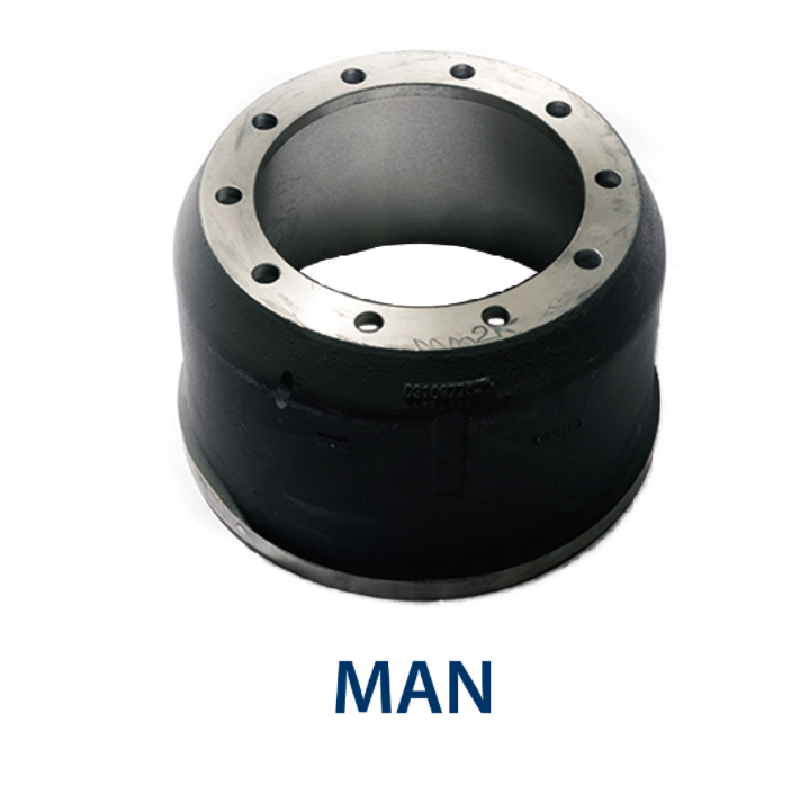Dis . 11, 2024 09:42 Back to list
Understanding the Mechanics of Brake Drum Couplings in Automotive Applications
Understanding Brake Drum Couplings A Comprehensive Overview
Brake drum couplings play a critical role in various mechanical systems, particularly in automotive, industrial, and aeronautical applications. These specialized components provide a mechanism for transmitting torque while accommodating misalignment and absorbing shocks from fluctuations in power transmission. This article delves into the functions, types, applications, advantages, and considerations related to brake drum couplings.
What is a Brake Drum Coupling?
A brake drum coupling is a device used to connect two shafts together while allowing for some degree of flexibility. It typically comprises two main components the brake drum itself, which serves as a friction surface, and the coupling mechanism that facilitates the connection and operation between two shafts. The design allows for the efficient transfer of motion and power under varying load conditions.
Functions of Brake Drum Couplings
1. Torque Transmission The primary function of a brake drum coupling is to transmit rotational motion and torque from one shaft to another. This is vital in ensuring that mechanical systems operate smoothly and effectively.
2. Misalignment Compensation One of the most significant advantages of brake drum couplings is their ability to accommodate misalignment. Whether due to manufacturing tolerances, thermal expansion, or wear and tear, misalignment can lead to increased wear, vibration, and potential failure. Brake drum couplings allow for limited angular and axial misalignment, safeguarding the integrity of the overall system.
3. Shock Absorption Brake drum couplings can absorb shocks and vibrations that result from sudden changes in loading conditions or mechanical failure. This shock-absorbing capability extends the lifespan of both the coupling and the connected machinery.
4. Braking Mechanism In certain applications, the brake drum serves as an integral part of the braking system itself, providing a surface against which brake shoes can press to slow down or stop a vehicle or machinery.
Types of Brake Drum Couplings
There are several types of brake drum couplings, each designed for specific applications and load requirements
1. Rigid Couplings These provide a solid connection between two shafts and are best suited for applications where precise alignment can be maintained.
2. Flexible Couplings These accommodate some degree of misalignment and are used in applications where shaft alignment cannot be guaranteed.
3. Oldham Couplings This type of coupling can handle light misalignment and is particularly useful in electronic motor applications.
4. Disc Couplings Made using thin metal discs that flex, these are known for their ability to handle high torque and are used in high-performance applications.
Applications of Brake Drum Couplings
brake drum coupling

Brake drum couplings are employed in a wide range of industries
- Automotive In vehicles, brake drum couplings help connect power from the engine to the wheels while enabling the braking system to function effectively.
- Industrial Machinery They are used in conveyor systems, pumps, and compressors, where smooth torque transfer and shock absorption are essential.
- Aerospace In aircraft, these couplings ensure reliable performance in high-stress environments, contributing to the safe transmission of power within various aircraft systems.
Advantages of Brake Drum Couplings
1. Durability Made from robust materials, brake drum couplings can withstand rigorous operational conditions, making them a reliable choice for heavy-duty applications.
2. Low Maintenance The inherent design reduces the need for frequent adjustments or replacements, contributing to lower maintenance costs.
3. Versatility With various designs tailored to different applications, brake drum couplings can be implemented in numerous mechanical systems.
Considerations When Using Brake Drum Couplings
While brake drum couplings offer numerous benefits, it is essential to consider specific factors to ensure optimal performance
1. Load Requirements Selecting the proper coupling based on the expected load and torque is crucial for performance and longevity.
2. Alignment While couplings can accommodate some misalignment, excessive misalignment may lead to premature wear and potential failure.
3. Environmental Conditions Exposure to extreme temperatures, chemicals, or moisture can affect the coupling’s performance; choose materials suitable for the operating environment.
Conclusion
Brake drum couplings are essential components that enhance the reliability and efficiency of mechanical systems across various industries. Their ability to transmit torque, absorb shocks, and accommodate misalignment makes them invaluable in automotive and industrial applications. Understanding their functions, types, and applications will help engineers and technicians make informed decisions regarding their use, ensuring optimal operational performance and safety.
-
Volvo Brake Drum: OEM Quality, Optimal Safety
NewsAug.27,2025
-
Durable Brake Drum MAZ for Heavy Duty Trucks | High Performance
NewsAug.26,2025
-
FUWA: Premium Quality, Reliable Performance & Innovative Solutions
NewsAug.25,2025
-
Liza Brake Drum: Superior Quality & Performance for Safe Driving
NewsAug.24,2025
-
Iveco Brake Drum | Premium OE Quality for Daily & Eurocargo
NewsAug.22,2025
-
Your Brake Drum Man: Quality & Performance Parts
NewsAug.21,2025
